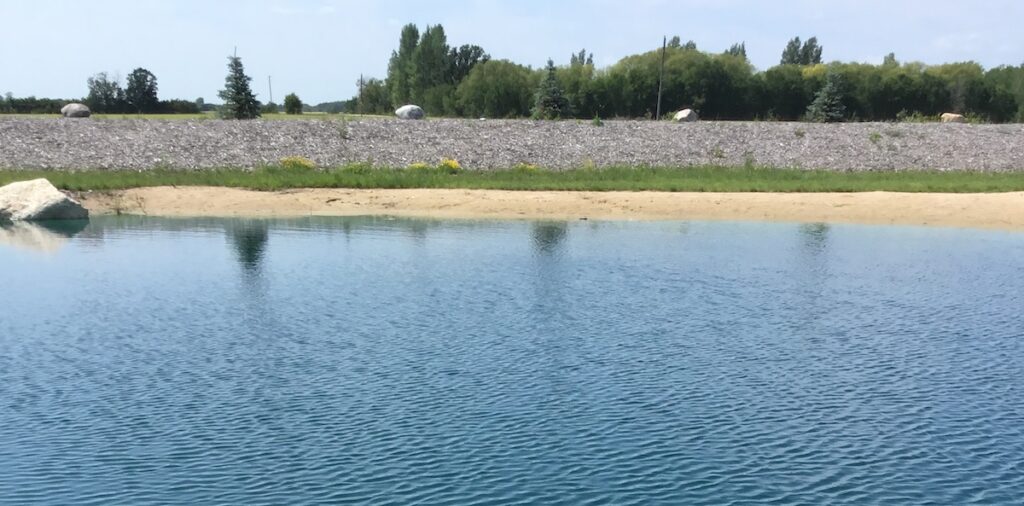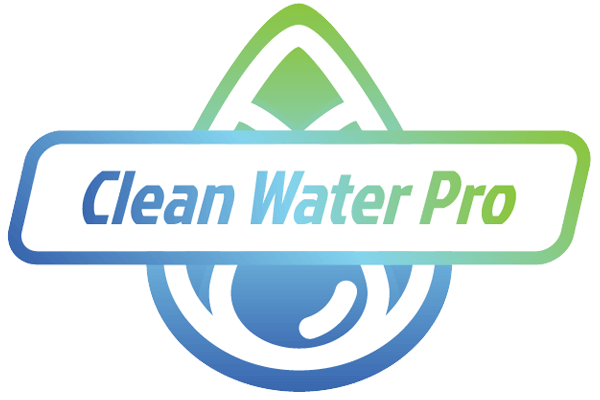Components of a Pond or Dugout:
Many of us have several uses for large ponds on our properties. These ponds are typically ¼ to 2 acres in size and range in depth. Depending on what you want to use the pond for and your pond’s water profile, there are multiple ways of treating it to keep it healthy and visually appealing.
Ponds and dugouts include nonliving components such as rocks, gravel, water, soil, air, and other elements that cohabit with living things, including plants, animals, and bacteria. When these components are in constant dialogue with one another, a self-sustaining “bloom of life” is produced.
Certain elements determine the nutrients and minerals available and their compositions, such as your pond’s diversity, size & shape, biomass, fish food, wildlife visitors, pond vegetation, climate, and location. Because each pond is home to its ecosystem, the water profile created by each pond is unique.
High nutrient loads, particularly ammonia, nitrogen and phosphorous and low dissolved oxygen, are the most common reasons pond ecology becomes unbalanced. Five main factors must exist in a pond to maintain a thriving ecosystem. The system includes plants, invertebrates, a pond base, a fine-bubble aeration system, and beneficial bacteria.

The Rise of Personal Swimming Ponds
Having your own swimming pond, beach, or dock is perfect for families. Families are busy, and having a recreational pond on their property is a great attraction they can enjoy with friends and family during the hot summer months.
In-ground pools are standard in most suburban communities worldwide, whereas swimming and recreational ponds on larger rural properties are becoming increasingly popular. Recently, many have turned to creating their own personal swimming pond to provide recreation and relaxation for their family.
The primary advantage of using a pond over a traditional pool for swimming is that it efficiently cleans itself without additional harsh chemicals like chlorine. Water quality can be maintained using fine bubble aeration and environmentally friendly nutrient-reducing treatments.
The arrangement of your pond will determine how much room you have for paddling and swimming. Add a beach and a shallow area for easy access in and out of the water. Design the banks so people and wildlife can safely enter and exit the pond in all locations.
For year-round fun with the family, you can even use the frozen pond for ice skating when winter arrives. Be sure to turn off the aeration system before freezing up, and always check the ice thickness each time you use it.

Trout Pond, Fish Pond, and Wildlife
Manitoba, home to Clean Water Pro, is known for its world-renowned Trout Fish lakes! Trout is an increasingly popular fish for recreational fishing as they grow large and put up an exciting fight. Trout fish with ideal habitats of 15-plus feet deep of water thrive in ponds and lakes for long periods.
The ideal habitat for trout fish is ponds and lakes 15-plus feet deep. Other popular fish for ¼ acre ponds and larger are smaller species such as perch, sunfish, smallmouth bass and crappie, to name a few.
Please note that moving fish from lakes to your backyard ponds is illegal. Check with your local authorities to find out where you can find fish to stock your pond. Your pond also needs a closed system that will not allow the water or fish to escape into other waterways.
The ponds in Canada must have ample fine bubble aeration installed and running over the winter for the fish to survive. Water aeration ensures enough dissolved oxygen for the fish to thrive during our long winter months.

How Irrigation Ponds Provide a Sustainable Solution
Pond and dugout owners may use their water for plant irrigation since it has a wealth of minerals and nutrients. Watering plants or crops with pond water containing dissolved minerals and nitrates may promote healthy plant growth.
Irrigating crops and gardens with pond water yields several economic, environmental, and practical benefits. Irrigation ponds can also alleviate farmers’ worries about water shortages.
The water in an irrigation pond is often cheaper to fill and requires less upkeep than other types of ponds. Farm irrigation ponds, especially those in low regions that may collect runoff from higher in the watershed, are rapidly refilled after a rainstorm. In addition to rainwater, tailwater may be used to replenish pond water. That means it’s possible to recycle the water if appropriately designed.
Capturing the spring runoff benefits the entire watershed and our lakes by easing the nutrient load and flooding downstream. Most agricultural and irrigation ponds are fed by rerouting streams at peak spring flow rates. Spring runoff helps compensate for water withdrawals during the dry seasons when large instream flows are necessary.
Over 50% of Canadians, particularly those in rural areas, still depend on groundwater as their primary source of drinking water. Notably, the agricultural sector utilizes groundwater more than any other industry. The energy needed to pump water from a pond is far less than that required to pump water from the ground.

The Role of Aerated Ponds in Livestock Well-being
Livestock operations commonly incorporate ponds akin to those used in households to fulfill several crucial needs for the well-being and efficiency of the animals, including cattle, poultry, pigs, horses, and more. These ponds serve as essential sources of clean and healthy drinking water, addressing a fundamental requirement for the proper hydration and health of the livestock. Additionally, operations that involve barns necessitate water for cleaning and maintaining sanitary conditions within the facilities.
Scientific evidence shows that aerating water with fine bubble aeration significantly influences the livestock herd, promoting improved weight gain, reproduction, and lactation, ultimately ensuring a happy and healthy herd.
Adequate oxygen levels in water contribute to enhanced animal metabolism and nutrient absorption, leading to improved weight gain among livestock. Dairy operations benefit from improved water quality as it positively influences lactating animals. Fine bubble aeration helps maintain water quality, reducing the risk of waterborne diseases and promoting the overall health and vitality of the herd.
By incorporating fine bubble aeration into the management of ponds within livestock operations, farmers and ranchers can ensure a clean and reliable water source and create conditions that positively impact the physiological well-being of the animals. This holistic approach to water management contributes to the sustainability and success of livestock operations, ultimately fostering a happy and healthy herd.

Designing Ponds for Optimal Dog Training Environments
Maintaining a healthy, clean pond for dogs to swim in offers various benefits. Dog trainers often require large ponds for practical training.
One essential application is in swimming and water retrieval training, where ponds become ideal spaces for dogs to develop swimming skills and practice retrieving objects from the water. Search and rescue training can also benefit from ponds, as they provide realistic scenarios for dogs to locate and retrieve items or individuals in the water. Scent training becomes more challenging and realistic when conducted near or over water, enhancing a dog’s tracking and scent detection abilities.

Beyond training, ponds offer low-impact exercise, therapy, and rehabilitation opportunities, particularly beneficial for dogs with joint issues. Additional advantages of incorporating ponds into dog training routines include socialization and exposure to environmental elements, including water features. Whether for specialized tasks like water rescues or simply for recreational exercise, ponds provide a dynamic and engaging setting for dogs to enhance their physical fitness, mental acuity, and overall training proficiency.
The pond’s design should prioritize an efficient aeration system, and maintaining a depth greater than 12 feet makes it much more manageable. If the pond incorporates an island, ensure the water aeration system design can accommodate the irregular shape.
Navigating Home Water Challenges with Ponds
Many homeowners are challenged with poor groundwater wells for household use and have to turn surface water ponds. It is crucial to ensure that these ponds remain healthy and clean to safeguard the well-being of the people using the water. Households frequently use the water for bathing, flushing toilets, and even drinking when a proper water treatment system is in place.
Starting with clean, healthy water makes treating it much easier and less expensive. Promoting healthy, clean water and a fine-bubble aeration system is vital. If the water isn’t used for drinking, treating it with beneficial bacteria can also help reduce the nutrient load in the pond.
Elevating Festivities with Ponds
A well-designed backyard pond can also be a visual masterpiece promoting tranquillity and a stress-free environment. Consider adding a floating fountain with LED lights to add sound and beauty to your pond! It adds value to the landscape and, if appropriately located, can add a fantastic view from your home.
Maybe you own a wedding venue! A wedding celebration in a garden with a pond as the centrepiece is a great place to start. A pond can be a picturesque backdrop for wedding ceremonies and receptions, enhancing the romantic atmosphere and impressing guests with the scenery and elegance. It can symbolize tranquillity and create a serene ambiance, aligning with the emotional tone of weddings. Ponds can be incorporated into photography sessions, providing beautiful and natural settings for capturing memorable moments. Host a wedding ceremony by the pond in the garden and wow the guests with the scenery and elegance.

Conclusion
No matter what your pond is used for, a healthy and visually appealing pond is always an asset to your property. The pond is the focal point of the local flora and fauna. Fish, birds, and aquatic insects rely on it for food and shelter. Due to its importance in maintaining life, water tends to concentrate in environments rich in life. It provides endless enjoyment and increases the biodiversity at the location, which is excellent for our fragile environment.
